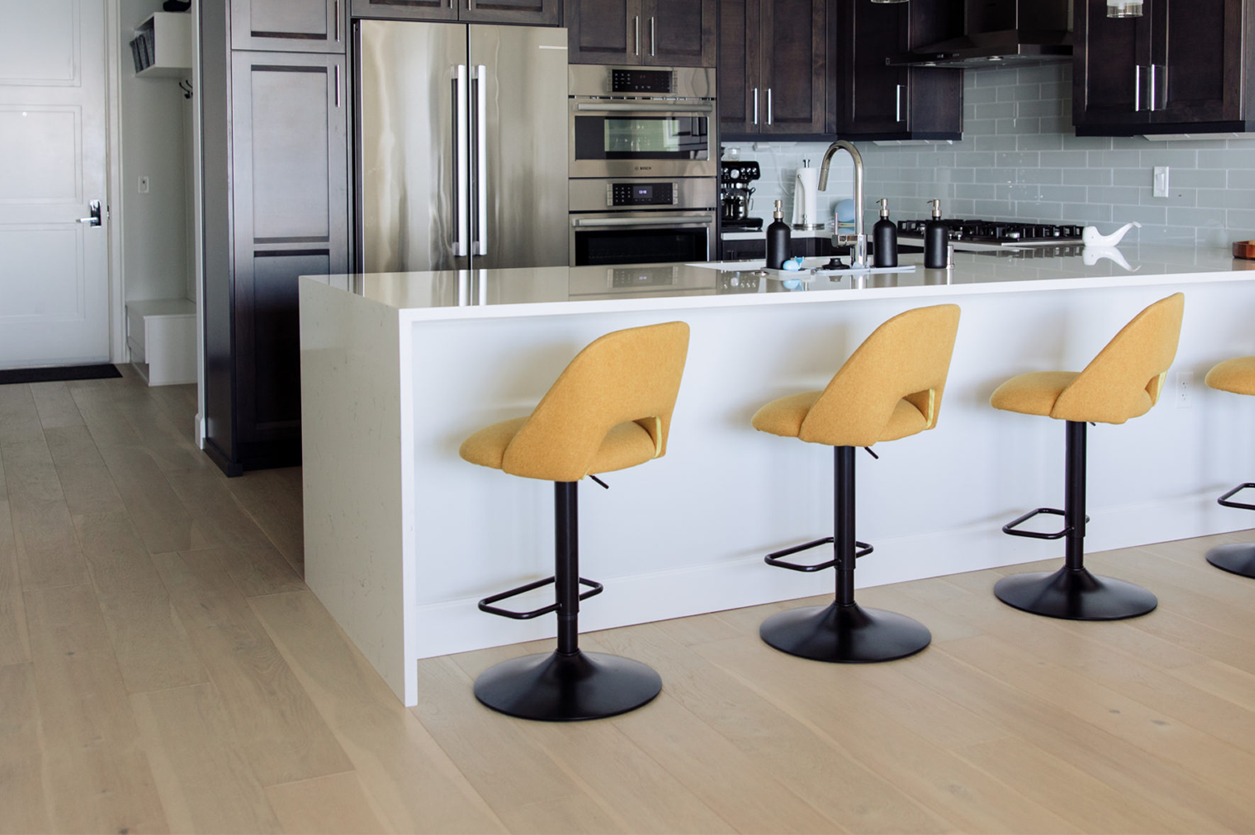Janky Janka Ratings – One Man’s Opinion
In episode 6 of our What the Floor podcast from September, we explored a huge pet peeve of Michael’s and others in the flooring community, Janka Ratings.
For those of you who may not know what they are, Janka ratings are a test done to measure the density of wood. This is mainly for hardwood flooring, according to Michael “in the test you embed a quarter-inch steel ball like a bearing into the hardwood and with a hydraulic press apply pressure, seeing how much it takes to get into the hardwood. This way they would see the pounds of pressure it took to embed the ball down. Very scientific.”
When you look up wood flooring online, the first thing that will come up is the Janka rating score. Seems like a pretty straight forward test, so why does Michael and others feel so negatively toward it? Why do we think they are Janky? Again, according to Michael “Janka ratings only measure the hardwood’s density, it doesn’t rate scratch resistance or water absorption. Some feel that you must look at the bigger picture. How would this Janka rating help you determine if hardwood is even a good choice for you?”
I think to really understand his point, we need to dig a little further. Let’s start with the standard, Red Oak, with a rating of 1290 on the Janka hardness scale. Red Oak has been used forever in hardwood flooring. And it is the leading standard oak tree that we use, mostly since it grows in North America and Europe.
In comparison, Balsa wood is 100 on the Janka scale. It’s very soft, so soft we even use it for carving and furniture. This is kind of the standard when it comes to soft hardwoods. Next you can compare it to Brazilian Cherry which is a 2350 on the Janka scale. None of these numbers seems to tell you, however, if the wood will scratch.
Nowadays, we use a lot of aluminum oxide finishes on flooring, which increases the hardness of the top layer. This isn’t considered in the Janka test either.
Michael’s opinion: “we must look at more facets. What are you trying to achieve? Where is this product going? What’s the goal for it, versus just if it’s harder, it’s better. Janka ratings are outdated, as they haven’t been done on an engineered platform, either. We also carry floors that are softwood, like birch or walnut. Sometimes it’ll be fir or pine. But the thing is Janka testing wouldn’t work for these because they tend to have a two-millimeter face, and therefore performing a test that requires a quarter inch face just to do the test will not work.”
Michael explains further that “Janka testing continues to be irrelevant because of HDF core hardwoods or products like Raintree’s SPC core hardwood. A thin veneer on top doesn’t need to be super thick because you’ve got that hard SPC core, like on Raintree. Another factor to consider is that Janka tests don’t account for dimensional stability, leaving itself irrelevant and just short. You must think so much about the floor’s construction, and overall engineering versus just solid hardness.”
We’re not telling you to ditch Janka’s ratings completely. At the end of the day, they are useful to determine and compare what type of hardwood fits the characteristics you’re looking for. Let’s say you have large dogs, and you really want hardwood flooring, then Hickory would be the way to go. You’ll know this because Hickory has a Janka rating of 1820 and will prove to be denser than the Red Oak standard of 1290. But the one thing you need to keep in mind is that regardless of the rating, all types of hardwood flooring will scratch.
So, is Janka Janky? Tell us what you think and don’t forget to check out our Podcast, What the Floor!

